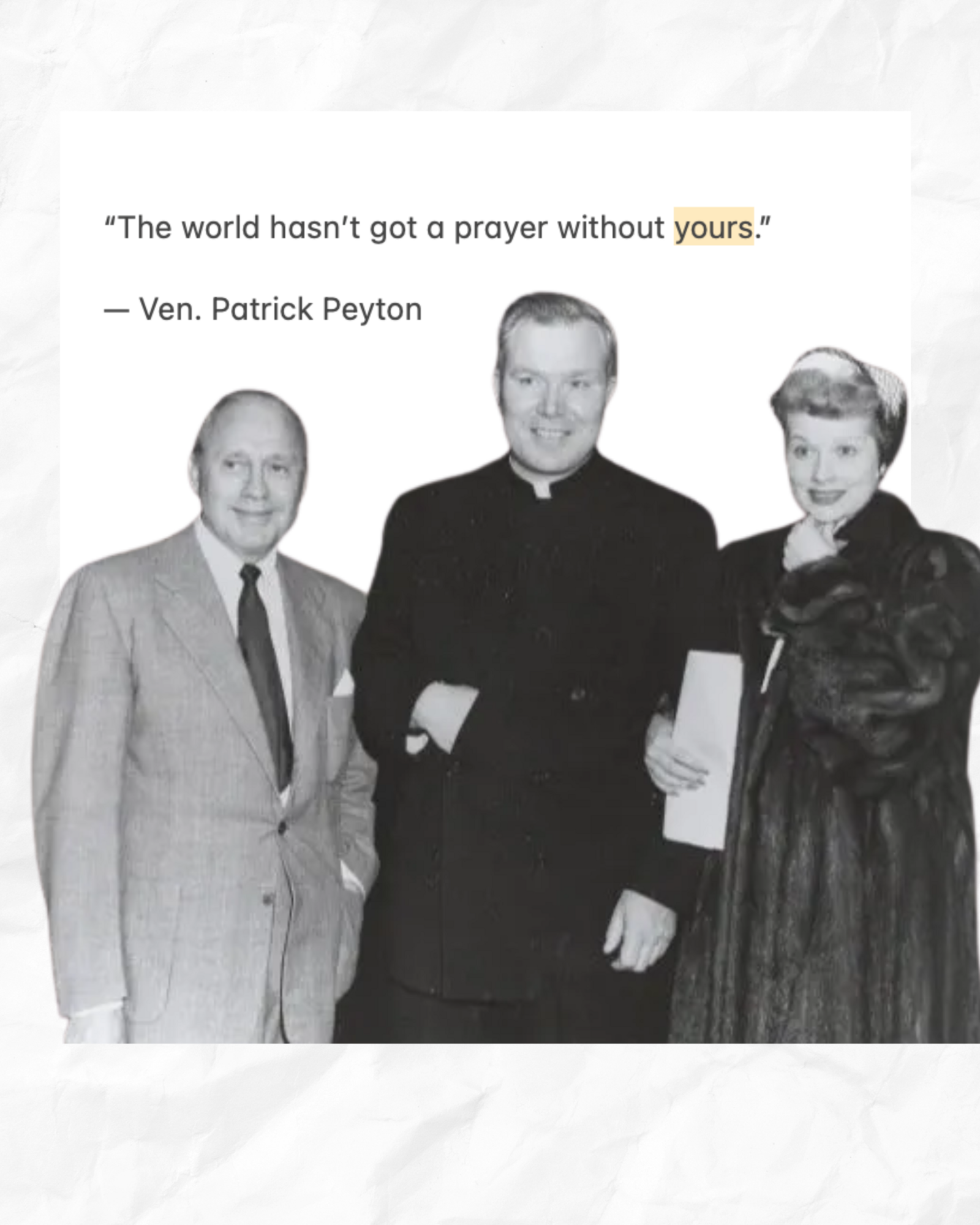History of Our Parish
-
-
An Abridged History of St. Therese, Little Flower
The Little Flower Story Begins
One day in 1937, two seminarians from Moreau Seminary, Patrick Peyton and Jack Haley, were sent in search of the seminary horse that had run away. They found it grazing in the area of town known as the Morningside Addition, ('Dog Patch' as it was sometimes called). More importantly, these seminarians also found a small settlement of nominal Catholics that were living in appalling poverty. They knew something had to be done for these people. They spoke with their provincial and convinced him that these people needed help: food, clothing, housing, as well as a place of worship and religious instruction. The seeds of Little Flower Parish were planted.With permission to help these people, the first "capital campaign" was underway. Land at the corner of Willis and Warrick was donated by Mr. and Mrs. George Hepler. Within a month's time, a chapel able to seat 125 people was built and Fr. Joseph Payne, then a student at Notre Dame, was given temporary assignment of the mission church. His "temporary" assignment lasted 35 years!
Fr. Payne's leadership brought into being a parish with the charisms of vibrant liturgy, faith development and reaching out to those in need. Long before Vatican II took place, the laity was actively involved in every aspect of parish life. The Christian Family Movement began with Fr. Payne. The parish was family, and the family was the parish.
1950's
In 1950 the mission church officially became St. Thérèse of Lisieux parish, aka "Little Flower." By the mid 50's the parish had grown from 48 to 366 families. The chapel was bulging at the seams. So, in 1954 a pledge drive to build a new church was undertaken. Again, Mrs. Hepler donated land on Ironwood, where Little Flower church stands today. In 1958 the new church was dedicated by Bishop Pursley.1990's
The expansion of ministries brought the need for new and renovated facilities. In 1997 The Promise of Little Flower capital campaign was begun. A Chapel was added and a residence to serve as the rectory was purchased on the corner of George and Bailey streets. A Parish Center was built to include a gymnasium, six multi purpose rooms, the wellness center, youth center, family activity area and kitchen. The dungeon, the former area of the youth group behind Fr. Payne Hall, was renovated for an expanded food pantry and clothing center. On October 1st, our parish feast of the Little Flower, in the Jubilee Year of 2000, we came together to celebrate and dedicate this accomplishment. Bishop John D'Arcy joined us for this occasion.
21st Century
A new capital campaign began in 2018 to renovate the sanctuary and infrastructures. Renovations were completed in 2022.
Also in 2018, our parish began an internal renewal in life in the Holy Spirit, continuing our commitment to vibrant orthodoxy, evangelization, and a culture of prayer, healthy teamwork, and discipleship. With the help of Amazing Parish, we further solidified our parish mission (our "why we exist"), taking the spirit of our founding, to care for the materially and spiritually poor: we exist to rescue people from the poverty of an identity outside of Jesus.
Taking inspiration from our rediscovery of the parish's very beginnings, we believed that the spirit-filled efforts of (soon-to-be Father) Patrick Peyton deserved greater recognition. On September 7th, 2025, the parish center was dedicated and named the Venerable Patrick Peyton Center, in the presence of the President of Holy Cross Family Ministries and the vice-postulator of his canonization cause, Fr. David Marcham. Parishioners also cast their votes for renaming our parish center classrooms, drawing from saints who lived the mission of our parish or who had connections to our local community. Those saints are: St. Lorenzo Ruiz, St. Kateri Tekakwitha, St. Andre Bessette, St. Maximilian Kolbe, St. John Paul II, Blessed Solanus Casey, and Bl. Michael McGivney.
-
-
-
-





